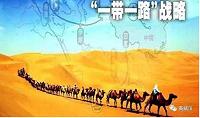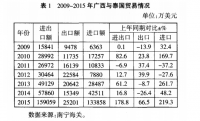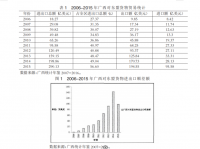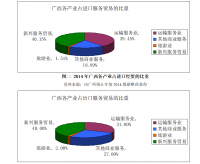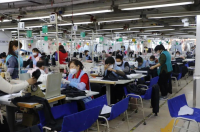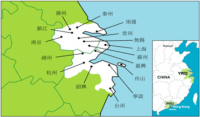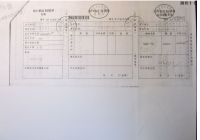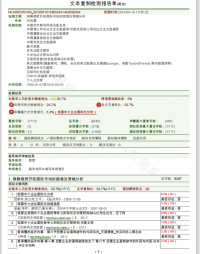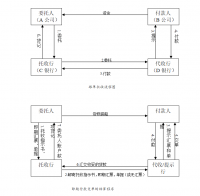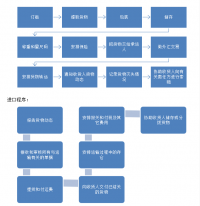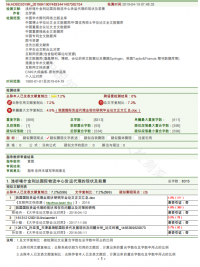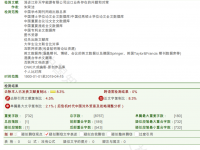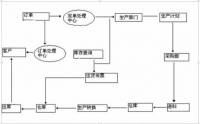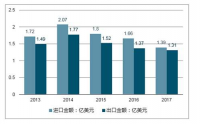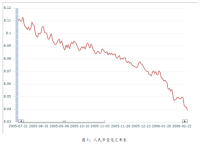一带一路战略下中华民族文化对国际贸易的影响
摘要:在“一带一路”战略背景下,国际贸易的发展对我国经济发展格局和国际竞争力的提升发挥着越来越重要的作用。因此,我国很重视国际贸易的发展。经济因素一直以来与文化交流有着不可分割的联系,而民族文化作为我国历史发展中的最重要的一部分,不仅影响着人们的行为方式和风俗习惯,也影响着我国的国际贸易发展。在一带一路战略下,民族文化在国际贸易中既面临着发展机遇也迎来了挑战。宗教冲突、国内的民族矛盾以及境外敌对势力的影响使我国民族团结问题加深,民族文化难以在国际中发展。国内的民族文化资源流失严重使民族文化难以在国际中传承。为协调以上矛盾,促进民族文化在国际贸易中更好地发展,各国家有必要加强本国民族文化的认同性,发展具有民族文化特色的产业以及坚持和而不同的发展原则。
关键词:一带一路;民族文化;国际贸易;影响
Influence of Chinese Culture on International Trade under Belt and Road Initiative
Abstract: Under the “Belt and Road” Initiative, the development of international trade has played an increasingly important role in the improvement of China’s economic development pattern and international competitiveness. Therefore, China attaches great importance to the development of international trade. Economic factors have always been inextricably linked with cultural exchanges, and national culture is the most important part of the development of China’s history. It not only affects people’s behavior and customs, but also affects the development of China’s international trade. Under the “Belt and Road” Initiative, ethnic culture faces both opportunities for development and challenges in international trade. Religious conflicts, domestic ethnic conflicts and the influence of foreign hostile forces have deepened the problem of national unity in our country, which is difficult for ethnic culture to develop in the international community. The serious loss of national cultural resources in the country makes it difficult for ethnic culture to inherit in the international community. In order to coordinate the above contradictions and promote better development of national culture in international trade, it is necessary for all countries to strengthen the identity of their own national culture, develop industries with national cultural characteristics, and adhere to the principle of harmonious and different development.
Key words: the “Belt and Road” Initiative; national culture; international trade; influence
1Introduction
Driven by “Belt and Road” Initiative, cultural exchanges and economic cooperation between China and other countries have been improved day by day.
In this context, ethnic culture influences the production and development of its related industries, thereby affecting the content of international trade and ultimately having a profound impact on the pattern and scale of international trade. With the promotion of economic globalization, national culture plays an increasingly important role in international trade. In international trade, the similarities of ethnic cultures reduce communication barriers in the trade process and increase the trust and cooperation of other countries. The diversity of ethnic cultures has given all parties a sense of freshness and enthusiasm for being involved in the trade process.
However, while national culture promotes regional economic development in international trade, it also faces the challenges. Religion, as an important part of the spiritual culture in ethnic culture, cannot be ignored because of its diversity. In addition, the loss of national culture is also a problem that needs attention today.
Therefore, this thesis analyzes the influence of Chinese culture on international trade under the “Belt and Road” Initiative and the development of Chinese culture in international trade in the future.
1.1Connotation of “Belt and Road”
In response to the trend of multi-polarization and economic globalization, President Xi Jinping proposed a strategic concept of the “Belt and Road” Initiative in September 2013. The “Belt and Road” Initiative includes the “Silk Road Economic Belt” and “21st Century Maritime Silk Road”. In addition to China, the “Belt and Road” Initiative involves a total of 68 countries.
It is the strategic decision made by the Central Government and the State Council based on the changes in the global situation and the overall planning of the domestic and foreign markets.
Complex and profound changes are taking place in the world today. The recovery of the world economic crisis is slow, and the development faced by all countries is still severe. However, the Chinese economy is highly connected with the world economy. China will adhere to the basic national policy of opening to the outside world and build a comprehensive open structure. Promoting the construction of the “Belt and Road” Initiative is not only a need for China to expand and deepen its opening to the outside world, but also a need to strengthen the mutually beneficial cooperation between Asia, Africa, Europe and Africa.
Along the “Belt and Road” Initiative, there are 18 regions, including 5 ethnic autonomous areas and 8 ethnic minority areas. The economic development of ethnic minority areas and areas inhabited by ethnic minorities is relatively backward. The development of the “Belt and Road” Initiative can integrate the differentiated resource endowments of various regions along the route, effectively exert their advantages, develop complementary economies, and promote economic development in ethnic minority areas.
1.2 The Relationship between Chinese Culture and International Trade under “Belt and Road” Initiative
In today’s economic globalization, ethnic culture has gradually become one of the most important factors in the field of international trade. The national culture is a culture with its own characteristics created and developed by people in the course of the historical development, which reflects the historical development level of a nation. It includes physical culture such as diet, clothing, and spiritual cultures such as language, writing, religion, festivals, and traditions. International trade is the exchange of goods and services between different countries and regions.
The national cultures of different countries are unique. The uniqueness of national culture, which is the prerequisite of cultural exchanges, leads to the differences of national cultures. In the face of great cultural differences, people have created a demand for foreign cultures in the hope that they will be able to acquire the scarce elements of their own culture to expand their own economic and trade fields. Under the background of the “Belt and Road” Initiative, in-depth study of ethnic culture can promote the recognition of regional economy, thus stimulating economic and trade development, and promoting regional economic development towards internationalization.
2 Opportunities for Chinese Culture in International Trade under “Belt and Road” Initiative
From the overall view, the “Belt and Road” Initiative focuses on achieving all-round cooperation and win-win cooperation within the region. To achieve these goals, China has a good foundation.
First of all, China is in a critical period of opening up to the outside world, entering into a phase emphasizing on import and export. The “Belt and Road” Initiative fits well with China’s current overall development strategy. Accelerating the construction of the “Belt and Road” Initiative is conducive to promoting the common economic development and common prosperity of countries along the route, and promoting regional economic integration in a wider scope, wider area, and deeper levels. It helps countries and regions of different nationalities and civilizations exchange views and provide a channel for world economic trade and cultural communication.
Secondly, the overall political relationship between China and the countries along the route is great. The “Belt and Road” Initiative has extensive affinity and appeal and has a deep people-centered basis. China is a unified multi-ethnic country with a long history. The diversity of its national culture can better fit the different national cultures of other countries.
Last but not least, the construction of infrastructure along the “Belt and Road” Initiative is conducive to solving the problem of poor transportation in ethnic minority areas and bringing them closer to the major international and domestic markets.
The countries and regions along the Silk Road Economic Belt have specific geographically close relationships. They are located at the intersection of Chinese civilization, Indian civilization, Islamic civilization, and ancient Greek and Roman civilizations. They share a strong sense of commonness in nationality, religion, and culture. With the development of cultural industries in areas along the border, cultural industry cooperation between China and the countries along the route not only has a historical basis, but also has realistic conditions.
First, the openness of the cultural market continues to increase. The opening of cultural markets and the growth of cultural trade in countries along the Silk Road Economic Belt have increased. The Central Asian countries have adopted cultural tourism as an industry with a focus on supporting and encouraging foreign investment, and have adopted policies to encourage private enterprises and foreign investment, as well as policies to encourage private and foreign enterprises to participate in tourism operations, thus forming a diversified pattern of cultural tourism investment.
Second, the countries along the route have close cultural ties with China. In recent years, cultural exchanges between China and the Silk Road Economic Belt along the country’s political, business, and academic circles have increased dramatically. Heads of state have frequent exchanges and economic and trade cooperation has continued to increase. There are frequent cultural and educational exchanges between Xinjiang and Central Asian countries. Central Asian countries attach great importance to developing tourism cooperation with China. For example, Uzbekistan became a destination country for Chinese citizens to travel abroad in 2010. China and Russia have a long history of cooperation in the book publishing industry. From 2001 to 2006, there were 1,274 Chinese-related books published in Russia.
Third, the cultural industries along the route are developing rapidly. Since the implementation of the strategy for the large-scale development of the western region, the regions and cities along the route have continuously took advantage of their own cultural resources and developed characteristic cultural industries. Along with this, the market has continued to expand and its contribution to regional economic and social development has continued to increase. In 2012, the added value of cultural industries in the three provinces of Sichuan, Yunnan, and Shanxi accounted for more than the national average. The cultural industry has become a pillar industry of provincial capitals such as Kunming, Xi’an and Chengdu, and its contribution to regional economic and social development has become more and more significant. The development of cultural industries such as cultural tourism, performing arts, and handicrafts have formed regional cultural brands such as folk song and dance performances, ethnic handicrafts, ethnic customs and tourism.
Bibliography
[1] 杨韶艳. “一带一路”建设背景下对民族文化影响国际贸易的理论坛探讨[J]. 西南民族大学学报(人文社科版),2015(06)
[2] 马兴胜. 区域民族经济与区域民族文化的依从理论思考[J]. 华中师范大学学报, 2010(1)
[3] 邹嘉龄,刘春腊,尹国庆,唐志鹏. 中国与“一带一路”沿线国家贸易格局及其经济贡献[J]. 地理科学进展,2015(05)
[4] 李晓,李俊久. “一带一路”与中国地缘政治经济战略的重构[J].世界经济与政治,2005(10)
[5] 孙立梅. 经济全球化与我国民族文化发展战略上[J].探索,2002(5)
[6] 樊纲. 全球化与中国[M]. 湖南大学出版社,2001
[7] 舒玉敏. 中国对外贸易[M]. 北京:对外经济贸易大学出版社,2006
[8] 刘光明. 中外企业文化案例[M]. 北京:经济管理出版社,2000



